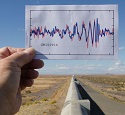Eclipse to cast ‘deep’ shadow across southern Washington state
will.ferguson
Parts of Washington state will be treated to an extraordinary show during what NASA is calling the “Great American Eclipse” on Aug. 21, even though the sun won’t completely disappear. As the total eclipse cuts a swath across neighboring Oregon and Idaho, some locations in the state will enjoy a “deep partial eclipse,” said astronomer Michael Allen of Washington State University.
“With most of the sun obscured by the moon, it will get partially dark,” he said, similar to very early in the morning. “The stars won’t come out, but for about two minutes, daylight will definitely be dimmer.”



